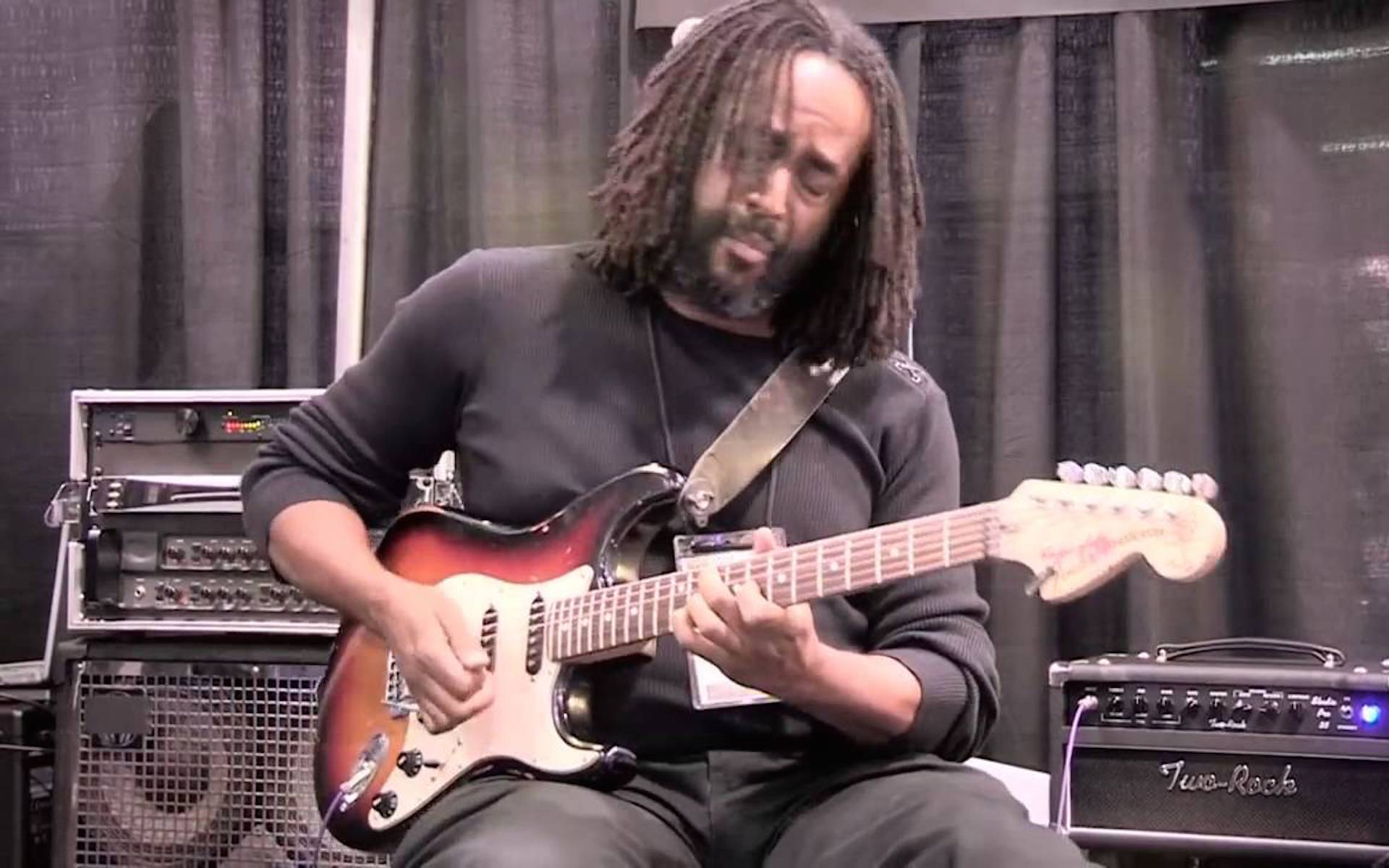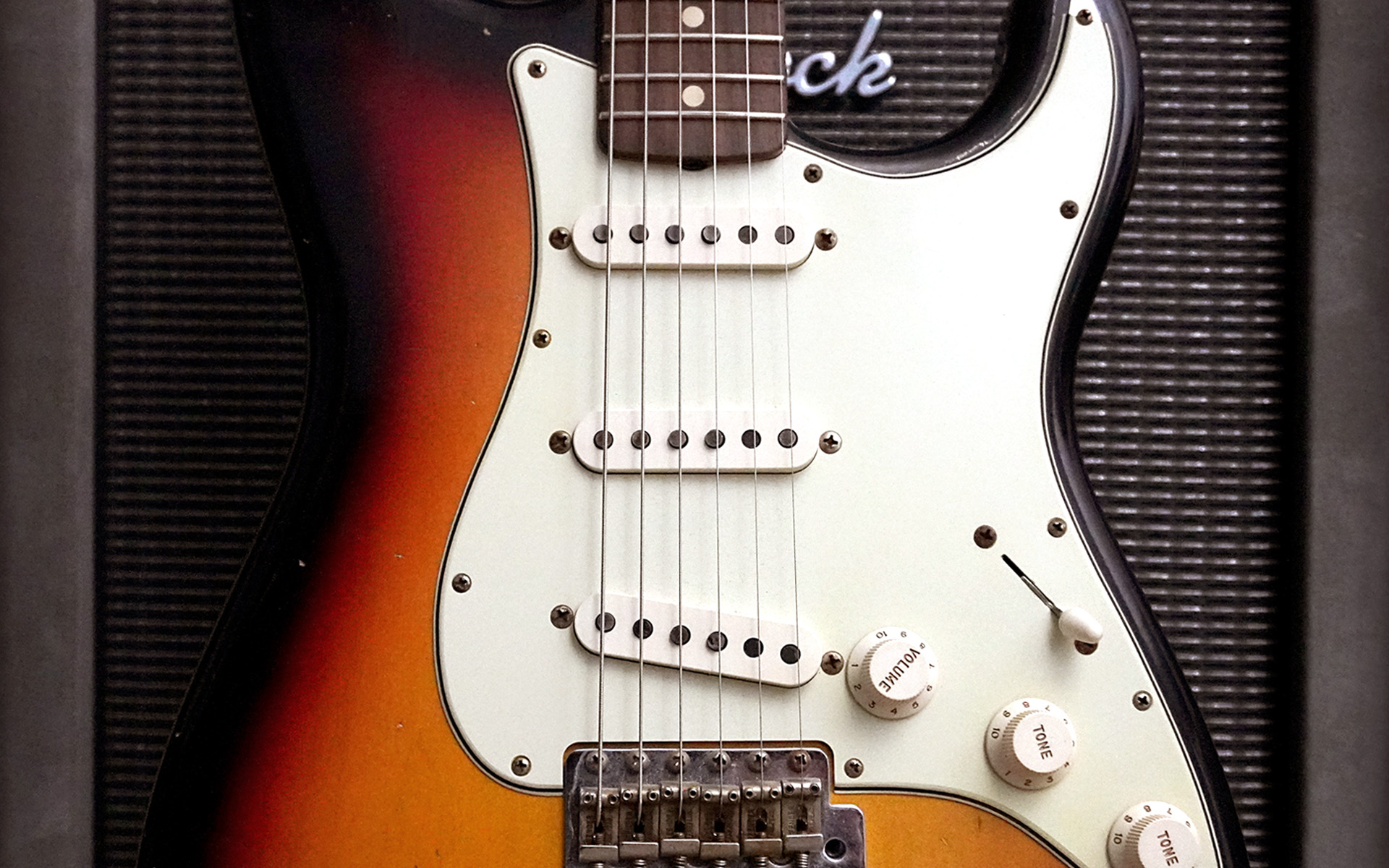One eye-opening revelation in the quest for tone happening to me back in the early ’90s: I was playing with a relatively popular Boston-based band called the Heavy Metal Horns. This was a 10 piece band playing horn-laced groovy and funky tunes. The instrumentation was electric bass, drums, two guitars, keyboards, alto sax, tenor sax, trombone, trumpet, and a percussionist who doubled on steel drum. The volume onstage was off the charts, even if we tried to tiptoe! I first discovered foam ear plugs around this time after going home after each gig with tinnitus. My guitar rig at the time was a Seymour Duncan Convertible 100w head, with a Hartke 4-10-inch guitar speaker cabinet.
I played a guitar that had humbuckers, one of the early Carvin DC200 Koa guitars, back from the early ’80s. The other guitarist in the group, Peter Calo, played a Fender Strat through a Roland Jazz Chorus. Invariably, whenever he took a solo, his tone cut through the wall of sound that was the band, and reached the audience with little or no effort. My humbucker solos were confirmed by audience members as “dark” and “lost in the mix.” I learned then that since the range of the other instruments in the band occupied just about every frequency available that was detectable by human ears, it would be a tonal challenge to be heard.
Subsequent guitar rigs came and went in the quest to be heard above the rest of the 10-piece juggernaut. But things only clicked when I finally made the wise move to a stock Fender Stratocaster (I guess the bulb finally went again on in my head). At heart I was a total traditionalist. I grew up listening to the guitar sounds of the ’60s and ’70s and my choice of music was anything soulful. All of my early guitar heroes played Fender Stratocasters. Even if they played other guitars at some later point, the Strat was the one that established their signature sound.
Since this time, I have come to think of electric guitars in two categories: Stratocasters and then, of course everything else, respectfully. There is no mistaking the signature sound of a Stratocaster, even if it does not say “Fender” on the headstock. There is, in my opinion, no electric guitar that has as wide of a range of tonal emotions. Whether or not he planned it out in detail, Leo Fender was really onto something very, very special. The Stratocaster has what it takes to cut through just about any mix, without even having to get into a volume war; The right frequencies to allow you to be heard above the other 20 band members. In addition to a signature, recognizable tone that seems to respond well to the nuances of your attack devices, whether picking, hammering, pulling, or plucking: A piece of tonal clay waiting for your fingers to mold it into art.
The model I chose, exclusively, for many years was the American Standard. It has been one of my main axes, even though pickup configurations have changed. Initially I tried EMG pickups, since the 60-cycle hum that accompanies any stock Strat, is unbearable to the novice Strat player. I moved quickly to the EMG vintage series, actively searching for a more traditional tone without the hum. Something was always missing from the authenticity of tone with these pickups, although I have heard some players using them in a very expressive and impressive way. When Fender started making vintage noiseless pickups, I decided it was the closest I could get to home and Hendrix without the hum. But it never stopped there!
My recent (goldmine) discovery was the recently released upgrade version of the Fender Highway One Stratocaster with Alnico III Pickups (’70s large headstock model). I stumbled across one of these somewhat by accident and after being seduced by the authentic sound of this instrument, had my guitar tech, Mark Herbert (of Pat Metheny Fame) do a top class setup for me. Mark is very critical of my constant selection of solutions in my Quest for Tone, but I was honestly surprised when he gave me the thumbs up on this one. Very simple guitar with all stock parts, a nitro-cellulose finish, which is perfect for those of you who are handy with a dremel tool for relic-ing. (I am posting a photo of my attempt to disguise this instrument as a vintage stock). In a blindfold test, more than a few have testified to the vintage feel of this instrument. In conclusion I highly recommend it as a budget alternative to a high-priced vintage instrument, for playability, not investment, of course. I think Fender should consider expanding this line. It is one of the most intriguing guitars I have played in a long while. Yes, it rivals a few custom shop models that have passed through my hands.
Through the years, I have concluded that the 60-cycle single coil hum is, and always will be part of the mix. I have learned to accept that it is always eliminated with some compromise to what we know as the traditional Stratocaster sound. There are various noise gates that offer some relief and, of note, is a back plate modification made by Suhr, which ostensibly cancels the hum by adding what amounts to another pickup, embedded in the back plate of the Strat. However, that too changes the sound, albeit on a very small level (for the purists). So the hum is part of my sound now, but I am happier with my overall tone. I still have a couple of American Standard Strats outfitted with the Fender Noiseless Pickups, that are still part of the rotation. But the Highway One reigns supreme on the tone-throne. For now, at least!
The video of the week is a demo of me playing a Highway One Stratocaster at a recent book signing for my book, Funk/R&B Guitar: Creative Solos Grooves and Sounds at a well known local music store in Boston called Mr. Music. You can hear jazz, blues, and funk solos on this stock Fender instrument. Enjoy!
STUDY GUITAR ONLINE WITH BERKLEE








